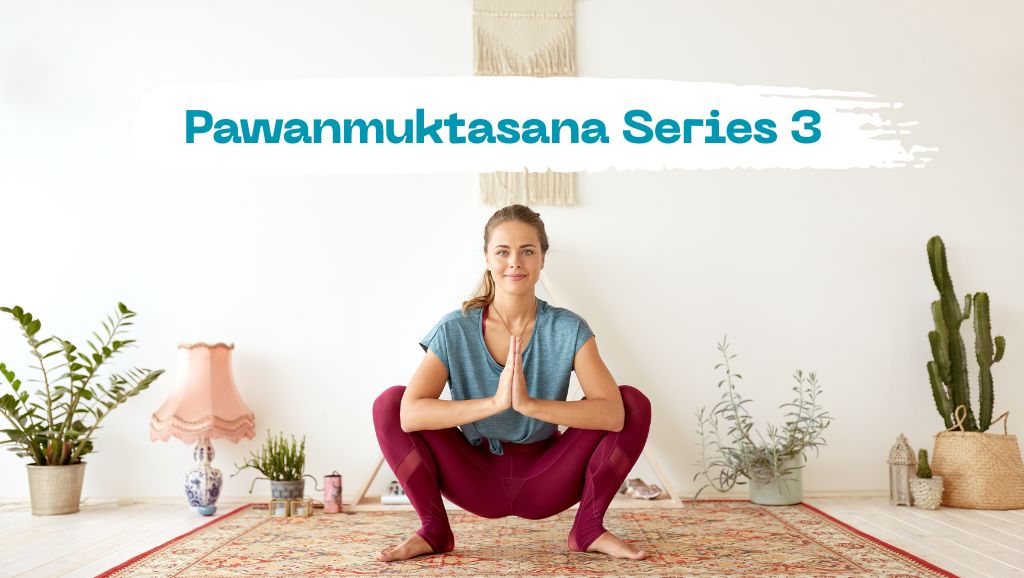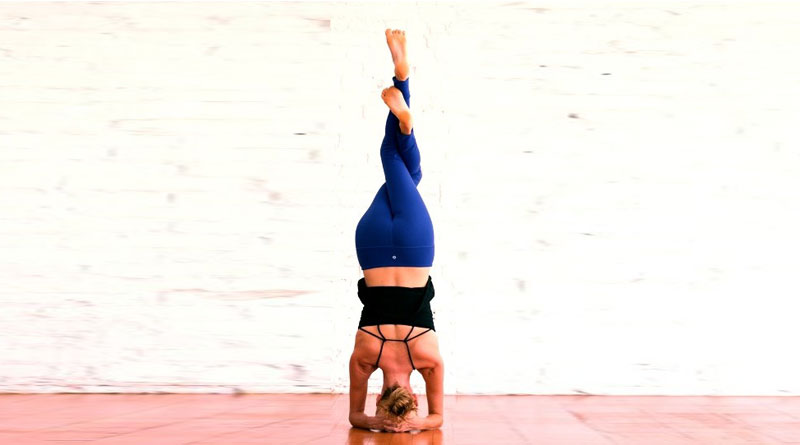Pawanmuktasana Series 3 is a group of asanas that facilitates proper energy flow through the body. As evident from the term ‘bandhas’, which are energy locks, when you perform these poses, all the energy blockages get removed. Moreover, you get to strengthen the muscles in the thighs and arms. This Shakti bandha sequence is all the more beneficial for beginners. You will be able to learn and master Pawanmuktasana Series 3 as a part of the Yoga Teacher Training in India.
In this sequence, most of the poses will be in a seated position. There are a total of 9 poses, which mostly involve the thighs, abdominal region, shoulders, and pelvis. Let us delve into the Shakti bandha sequence now.
How To Do The Pawanmuktasana Series 3?
Rajju Karshanasana
Also called ‘pulling the rope’, it mainly impacts the shoulders and upper back muscles.
You are required to emulate the stance of pulling an imaginary rope in this pose.
You must sit in Dandasana, with the legs stretched in front of you.
Imagine that there is a rope hanging from above. Inhale and try reaching out to the rope with your right hand, held straight. Look up.
While exhaling, you must pull the right hand down, without bending the hand at the elbow.
Your gaze must follow this movement.
Repeat the same thing with the left hand. This is one round.
Both hands will move alternately in this sequence.
This is extremely beneficial for loosening the joints in the back and helps in improving your posture. Your chest muscles also get better with practice. When you practice deep breathing while pulling the rope, the blood circulation in your body and respiration also increase. It is a calming pose as well.
Parivrtta Upavistha Konasana
Some yogis also call this pose Gatyatmak Meru Vakrasana. It involves a dynamic spinal twist.
From the base pose, you have to sit with the legs a few feet apart from one another.
Inhale and touch the right big toe with the outstretched left hand. And, take the right hand straight towards the back in a stretching motion.
You have to twist your back, while performing this stretching motion while exhaling.
Thereafter, inhale and release the hands.
Gaze in front of you.
Change the hands, and touch the opposite big toe and repeat the same stance. You can continue to do this 10-12 times.
Continuous breathing along with stretching of the back muscles and torso increases your range of motion. You will achieve spinal flexibility as well. You can also stimulate your digestive organs to perform better. The pose also helps in releasing the pain in the back. Learn about the complete pose in the popular Yoga Teacher Training Course in Bali.
Chakki Chalanasana
All Indian women are accustomed to this pose in the kitchen. And now it is there to motivate yoga practitioners.
After coming to the base position from the previous one, you must widen your legs a bit more. Interlock the fingers of both hands, and stretch the arms in front of you.
Bend a bit towards the front and rotate the torso from the right to the left side, leaning back in motion, and coming back to the central position again, and repeating it.
Thereafter, do it anti-clockwise. While doing this pose, you must keep the hips firm and allow the sitting bones to rest on the mat. Doing this 10-12 times will help, along with deep breathing.
This asana is extremely helpful for toning the nerves as well as the organs of the abdomen and pelvis. It also helps in regulating the menstrual cycle. The circular motion helps in giving a good massage to the internal organs. Your flexibility is enhanced, alongside a boost in your energy.
Nauka Sanchalanasana
Also called the Rowing Boat pose, this is more rhythmic than the stationary boat pose.
Sit with the legs stretched in front, and hold the arms parallel to the floor, with palms down. Imagine the stance of rowing a boat.
Clench both hands, exhale, and bend forward with straightened arms.
Inhaling, lean backward, drawing the hands back towards the shoulders. Your hands must follow a circular motion on each side.
At least 10 rounds are good to start with. You can reverse the direction of movement and continue for another 10 rounds.
This asana is extremely useful in releasing blocks from the abdomen, back, and pelvis. It also strengthens the core muscles and enhances balance. Your digestion will also improve.
Kashtha Takshanasana
Also called the Chopping wood pose, yogis sweat by it. You have to emulate the activity of chopping wood with an axe.
Squat in Malasana to begin with. You can place the feet at least a foot and a half apart.
Your knees should be pointing in either direction.
Interlock the fingers of both hands and stretch the hands in front of you. The elbows must be placed between the knees.
Raise the arms and bring them down, as if you are holding an axe and chopping wood. Inhale while raising, and exhale while bringing the hands down.
10-12 rounds of this pose are extremely beneficial.
When you practice this asana daily, your pelvis will be toned and so will your upper back. It also helps to calm you down.
Namaskarasana
While sitting in Malasana pose, hold hands together in Anjali mudra.
Try to stay in that position for a few counts, while gazing upwards. Your elbows must press against the inside of the thighs.
While inhaling, push the head backward, pushing your elbows against the knees. Retain this pose for some time.
Thereafter, exhale and stretch your hands in front of you. Your head should be bent forward, and your chin must touch your chest. You can squeeze in the knees as well.
Hold this position again for a few counts. This completes one round.
You must practice at least 5-10 rounds to gain maximum benefits.
This is a great pose to release anxiety and stress. Your posture also improves and so does your flexibility. The digestive system and respiratory system also get a huge stimulation.
Vayu Nishkasana
This is the wind releasing pose in yoga.
Sit in Malasana, and rise up and stand in Uttanasana, while holding the feet with your hands. Inhale.
Exhale and go back to Malasana. Inhale again and go up, in the forward fold position.
Repeat this movement 10-12 times.
If you practice this pose daily, you will get relief from indigestion, constipation, and acidity. It also stretches the entire body, from the head to the toes. Your vayu gets balanced, and you feel relaxed by the end of the practice.
Kauva Chalasana
Next comes the crow walking pose, which is a very dynamic yoga pose.
Squat with the buttocks resting on the heels. And place your hands on your knees.
You can move forward either on the toes or the heels, while bringing the knee to the opposite side on the floor.
You can take at least 50 steps for maximum impact. Continue to breathe normally.
This pose strengthens the upper body and improves balance. You will also get to build core strength and prepare the legs for meditative asanas, where you need to sit for a longer duration.
Udarakarshanasana
This is the final pose in this sequence and is called the abdominal stretch.
Squat as in the last pose, with the hands on the knees. Inhale properly.
Exhale and bring the right knee to the left side, near the left foot. Push the left knee with the left hand towards the right side, and twist towards the left.
Try to look over your left shoulder while squeezing the lower abdomen. Hold the position. Inhale and come back to the original position.
Repeat on the other side.
Practice 5-10 counts.
This pose, when practiced daily, improves digestion, tones the abdomen, relieves lower back tension, and also helps you to get rid of constipation. Your spinal flexibility also improves a lot.
Conclusion
You can practice such sequences as a part of the 200 hour yoga teacher training in india at World Peace Yoga School. So, get enrolled and start practicing now.





